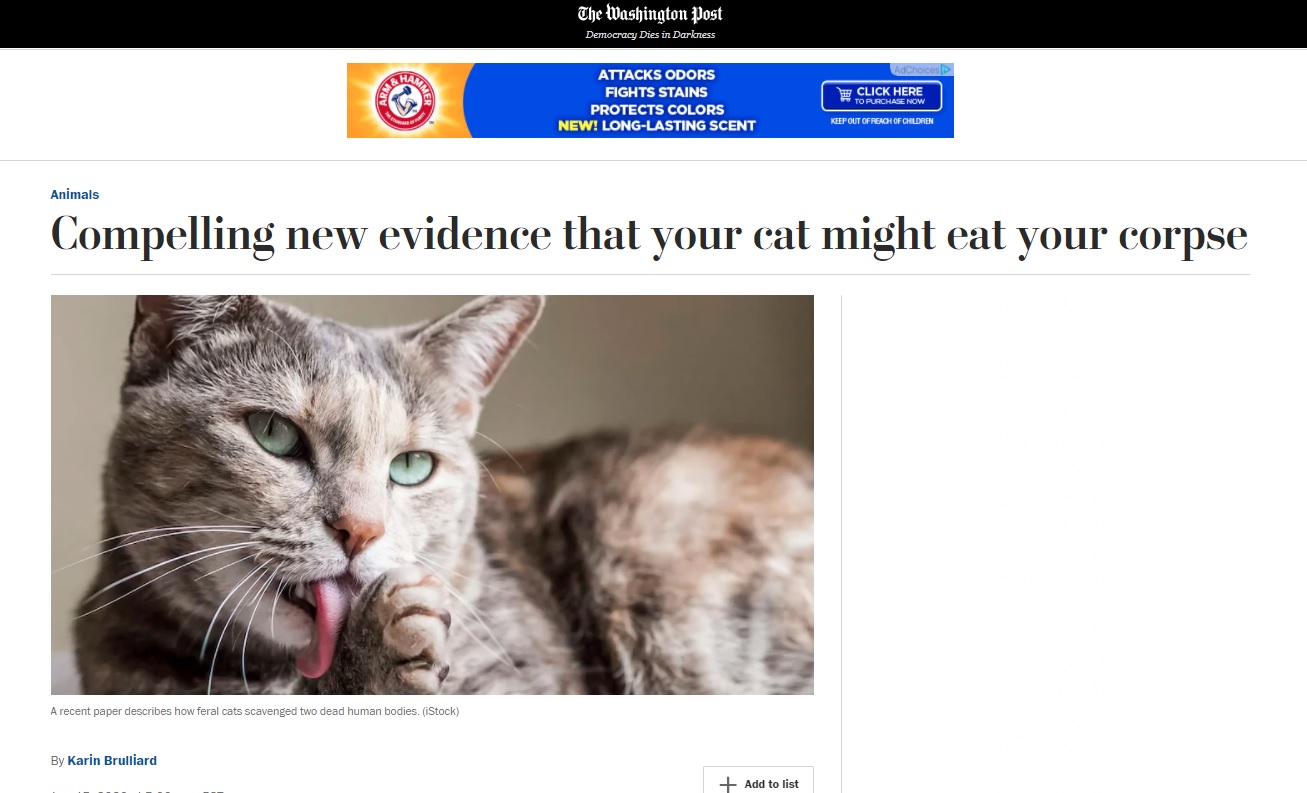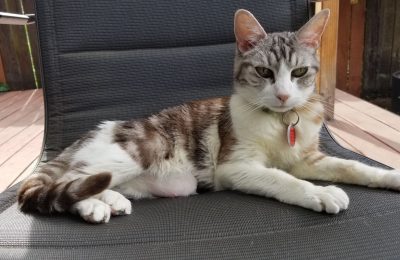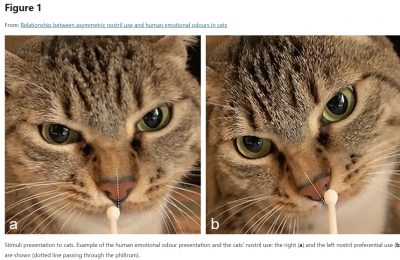It was almost a year ago that I reported on a study revealing scavenging patterns of feral cats outside of a forensic investigation station. These stations often research the changes that exposed human bodies undergo during decomposition, which is of great value to solving crimes and estimating details such as time of death.
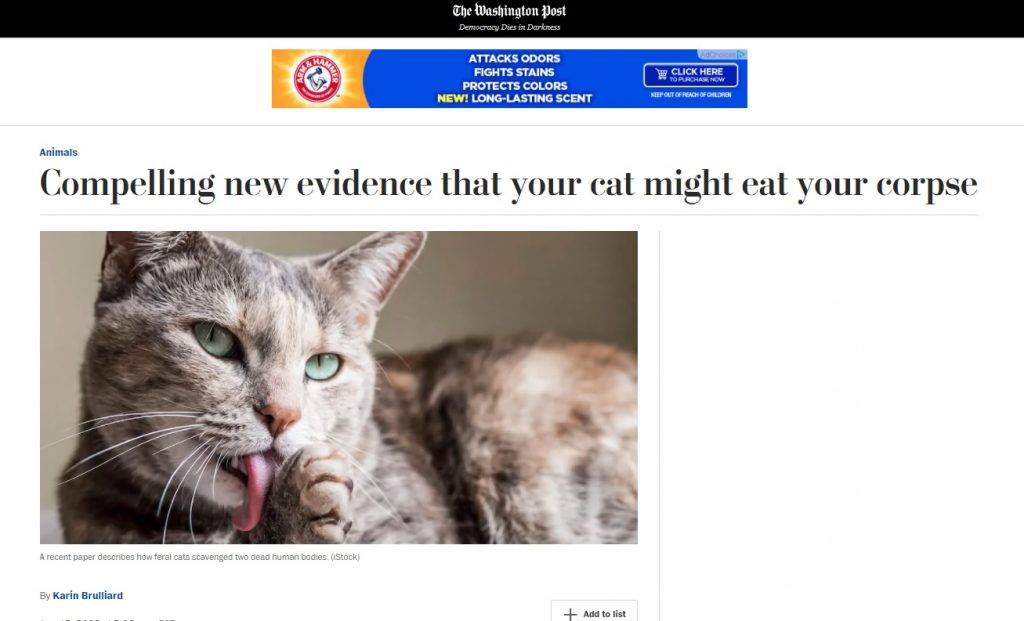
I knew people would get excited about a story about cats eating humans, although I didn’t know HOW much so! It led to interviews with Washington Post and Wired (and I didn’t even DO the research, I just blogged about it). Some people were also upset that I participated in “click bait,” or were concerned that drawing attention to the study might be giving cats a bad name. To be fair, it’s a fine line between playing into stereotypes about cats and trying to understand the complexities of cat behavior and the cat-human relationship, and I respect that this gory stuff isn’t everybody’s jam.
I will admit, I am a little bit fascinated by the morbid, and I did enjoy researching the literature on incidents of pets eating their deceased owners. Do you need to worry about your cat eating you? Definitely not if you are still alive! As I blogged before, there are some risk factors that increase the chance that your cat may eat you…namely, living alone, having a chronic illness, and living with a lot of free-roaming pets. And then dying with no one to check on you.
Sadly, these are the exact circumstances behind a new publication that detailed the damage done to a man who passed away whilst living with 30+ cats. “Postmortem predation by a clowder of domestic cats” was recently published in the journal Forensic Science, Medicine and Pathology. The subject of this case report was a 69-year-old male who had diabetes and epilepsy. It is believed that he also suffered from Diogenses syndrome, a condition associated with social isolation, hoarding, lack of hygiene and self-neglect.

This was the first documented assessment of post-mortem damage to a human body by a large number of cats. Because the man lived with so many cats, there was, to put it mildly, much more snacking on his body.
The cats had completely consumed the man’s heart and lungs (and upon discovery, one cat was resting in the man’s open chest cavity). The cats had also consumed a significant portion of the man’s face, scalp, arms and hands (yet the legs were left intact). Eyeballs – gone. Liver – gone. Esophagus and trachea – nowhere to be seen. (There are some amazing photos in the article, but do not check them out if you are eating).
The main takeaway is that a larger number of cats led to significantly more damage and eating. Whereas larger animals such as dogs can alone do extensive damage to a body, this level of damage has not previously been seen in cats, demonstrating…strength in numbers.
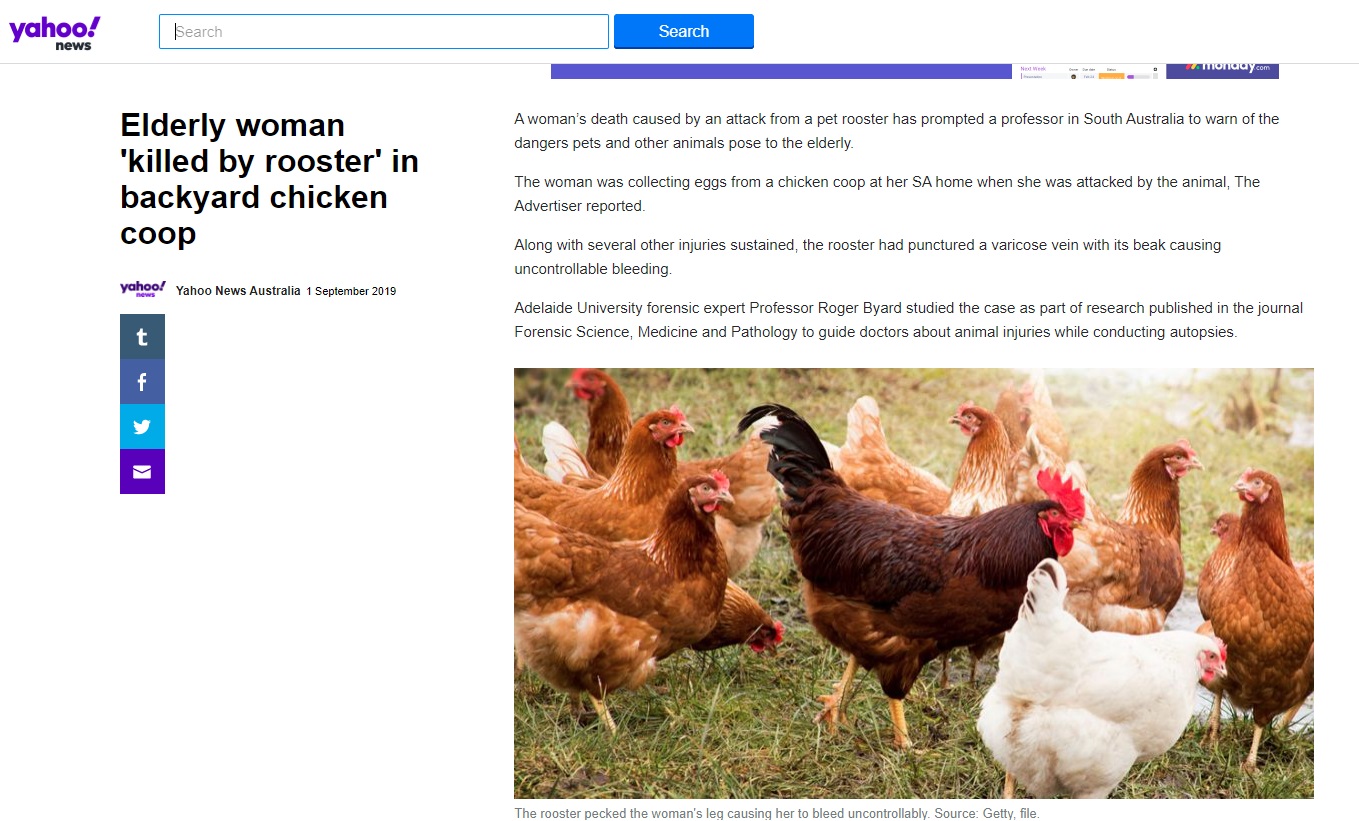
Sometimes the most interesting part of research is the person behind the research. Professor Roger Byard, a professor at the University of Adelaide, has also published his work on fatal maulings by tigers, adult deaths involving ladders, fatal rooster attacks, death by selfies, and homicidal impalement with a chair leg…and that’s just in the last three years!? Where did I go wrong with my research career? Someone interview this guy!!! Maybe I should???
Reference
Byard, R. W. (2020). Postmortem predation by a clowder of domestic cats. Forensic Science, Medicine and Pathology, 1-4.

